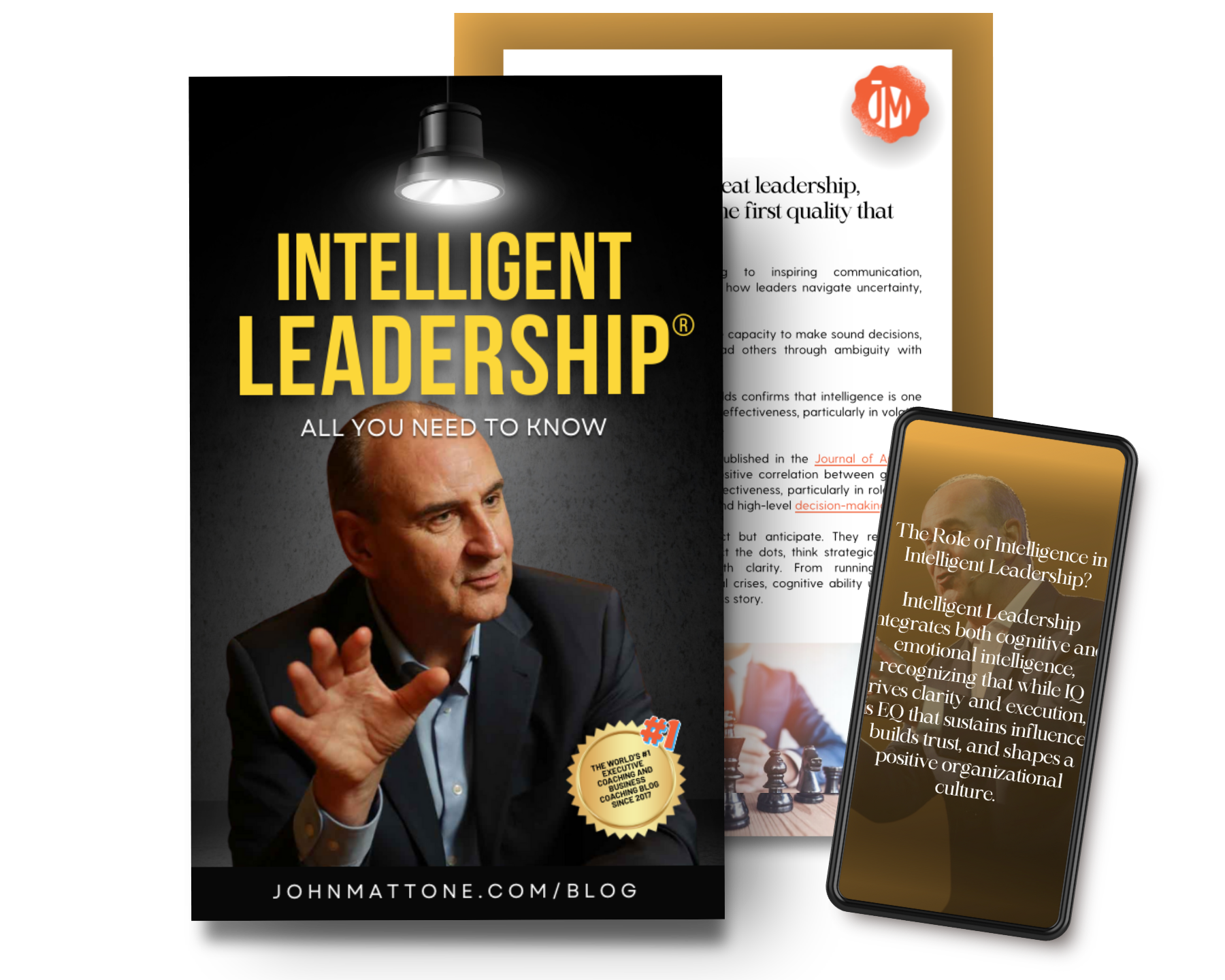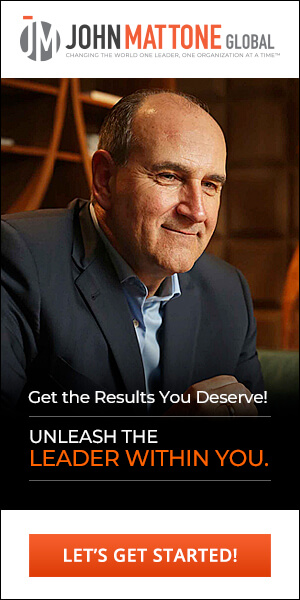Conflict is an unavoidable part of leadership. Whether you’re leading a corporation in New York, a startup in London, or a team in Singapore. What defines your true impact is how you respond when tension arises. Great leaders don’t avoid conflict; they transform it.
Through the lens of Intelligent Leadership, conflict becomes a catalyst for growth, an opportunity to strengthen character, deepen trust, and build alignment. It’s not about control but connection. Intelligent Leaders look inward first, grounding their actions in self-awareness, empathy, and courage.
When you manage conflict from the inside out, you strengthen one of the six dimensions of communication effectiveness, managing conflict constructively. In doing so, you elevate how you connect, listen, and influence.
Every disagreement becomes a proving ground for integrity, a chance to build trust, and a catalyst for lasting cultural strength.
What Are Conflict Management Styles?

Conflict management styles describe how individuals approach and resolve tension between themselves or between groups. They matter because how you handle conflict determines whether your relationships weaken or strengthen over time.
Conflict is not inherently destructive. It’s diagnostic. It reflects the health of your inner core (your character, courage, and values) and the maturity of your outer core (your communication and behavioral skills).
In my work coaching global CEOs, I’ve seen that conflict reveals a leader’s emotional intelligence, humility, and willingness to engage with truth. When handled with self-awareness and empathy, it becomes a catalyst for alignment and innovation.
Conflict as the Bridge Between Listening and Influencing
Within my Wheel of Intelligent Leadership, managing conflict constructively is the behavioral bridge between listening fully and influencing others. It’s the moment when a leader must demonstrate empathy, courage, and integrity simultaneously.
Conflict management isn’t merely about solving problems; it’s about preserving trust while driving results.
In Intelligent Leadership, I teach that:
- Mature leaders approach conflict non-defensively, seeking shared understanding.
- Immature leaders avoid, blame, or control—behaviors rooted in insecurity or weak inner-core strength.
- Great leaders use conflict to model vulnerability, strengthen trust, and clarify shared goals.
The Two Dimensions of Conflict
Two behavioral dimensions shape every conflict management style:
- Assertiveness: how strongly you pursue your own goals or needs.
- Cooperativeness: how much you strive to meet the needs of others.
When these two dimensions intersect, they form several conflict styles, each with unique advantages and risks. Leaders who can flex across them demonstrate emotional maturity and adaptability.
Turning Conflict into Connection
Effective conflict management is not about control. It’s about connection. Intelligent leaders transform moments of tension into opportunities for trust, learning, and growth, thereby creating a foundation for stronger relationships and lasting cultural health.
Further Learning on Conflict Psychology
If you’re interested in the science behind these behaviors, the American Psychological Association offers a helpful primer on the Science of Conflict Resolution. For a hands-on look at workplace techniques, MindTools provides a concise guide on Conflict Management Techniques.
In Intelligent Leadership, I remind leaders that conflict is not something to be avoided but embraced as an opportunity to live honorably, act selflessly, and give your best, even when the conversation is difficult. The intelligent leader sees every conflict as a test of character and a chance to strengthen both trust and culture.
Leading Through Conflict: The Thomas-Kilmann Model Through the Lens of Intelligent Leadership

Conflict is an unavoidable part of leadership. How we respond to it, not the conflict itself, determines whether our teams grow stronger or fall apart.
According to a 2024 paper, the Thomas-Kilmann model is one of the most widely recognized frameworks for understanding how individuals handle workplace conflict.
The Thomas-Kilmann Model offers a valuable tactical framework for understanding five conflict management styles (competing, avoiding, accommodating, compromising, and collaborating), each reflecting a different balance between assertiveness (pursuing your own goals) and cooperativeness (prioritizing relationships).
While this model helps leaders recognize their instinctive approach to conflict, Intelligent Leadership challenges us to go deeper. As I teach in The Intelligent Leader and Intelligent Leadership, sustainable effectiveness in conflict doesn’t begin with what you do; it begins with who you are being.
The maturity of your inner core (your courage, empathy, integrity, and humility) ultimately determines how skillfully you apply any outer-core behavior or model.
| Conflict Management Style | Assertiveness Level | Cooperativeness Level | Best Used When… | Inner-Core Strengths That Elevate It |
| Competing | High | Low | Quick, decisive action is needed or when defending a vital principle or standard. | Courage and integrity, acting boldly for the right reasons, not ego. |
| Avoiding | Low | Low | The issue is minor or emotions are high and time is needed to gain perspective. | Emotional regulation and self-awareness, choosing restraint, not escape. |
| Accommodating | Low | High | Preserving trust or harmony matters more than winning the argument. | Humility and compassion, yielding from strength, not fear. |
| Compromising | Moderate | Moderate | Both sides seek a workable, time-efficient middle ground. | Fairness and accountability, balancing results with relationships. |
| Collaborating | High | High | A creative, win-win solution is desired, and trust can be maintained. | Empathy, vulnerability, and vision, co-creating rather than competing. |
Each of these styles represents more than a behavioral choice. It is a moment of leadership reflection, a chance to decide whether to protect your own goals or to strengthen connection with others.
The Value of Adaptability
Intelligent Leaders understand that there is no single “best” style. They develop the range and agility to draw from any of them as needed, guided by self-awareness and purpose. Before responding to conflict, they pause to ask themselves:
- What does this situation require of me as a leader?
- What inner qualities must I activate: courage, humility, or empathy?
- Which approach will strengthen trust, not just achieve resolution?
True leadership in conflict is not about mastering a style; it’s about mastering yourself. When your inner core is strong, every conversation becomes an opportunity for growth, alignment, and transformation.
For additional context, you can explore the origins of this model further through the Thomas-Kilmann Instrument.
1. The Competing Management Style: What It Is and When To Use It

The competing style means standing firm on your position and prioritizing your own goals over others. It’s most effective when quick, decisive action is required or when defending a vital principle or boundary.
The competing style is defined by high assertiveness and low cooperativeness. It reflects a leader’s willingness to take a stand, even when that decision might not be popular.
In a crisis, or when an organization faces a threatening situation that demands clarity and speed, the competing style can protect the business and maintain direction.
When the Competing Style Works
Leaders often rely on the competing style when:
- Making a quick decision in time-sensitive or high-stakes situations.
- Enforcing ethical or safety standards that are non-negotiable.
- Defending the organization’s mission or values against compromise.
- Protecting their team from harmful or unfair demands.
In these cases, competing means standing for what’s right, even if it comes with resistance.
Pitfalls of Overusing the Competing Style
Overreliance on the competing style reveals an imbalance in a leader’s inner core. When assertiveness is not anchored in humility and empathy, conviction can harden into control, and strength can become intimidation.
Intelligent Leaders understand that courage must be guided by character. They use the competing style sparingly and transparently, ensuring that every decisive action serves a higher purpose, protecting values rather than egos.
Advancing the mission, not personal power. When inner strength and outer behavior are aligned, even the firmest stance communicates integrity and earns respect, not fear.
How Intelligent Leaders Use It Wisely
As I emphasize in Intelligent Leadership, true strength lies in conviction paired with humility. Intelligent Leaders use the competing style selectively and transparently.
They explain the rationale behind their decisions and invite feedback afterward. This helps maintain respect and keeps the door open for collaboration later.
For instance, I once coached a CEO who had to make an unpopular decision, cutting a non-performing division to preserve the health of the larger organization. He used the competing style decisively, then followed up with open communication, empathy, and support for those affected. The result was renewed trust, not resentment.
This is the power of assertive integrity: acting boldly without ever being arrogant. It is leadership through principle rather than pride.
2. The Avoiding Management Style: What It Is and When To Use It

The avoiding style is when a person withdraws from addressing conflict directly. It can be useful when emotions are high or the issue is minor, but overuse often delays resolution and damages trust.
The avoiding style reflects a low level of both assertiveness and cooperativeness. Leaders using this style choose to step back rather than confront the problem. In some cases, this temporary distance allows emotions to settle and perspective to return.
When the Avoiding Style Can Help
There are moments when avoiding conflict is strategic rather than passive. This approach works best when:
- The issue is trivial and doesn’t warrant confrontation.
- Emotions are too intense, and time is needed to regain calm.
- You require more information before engaging.
- Another party involved is not yet ready for a productive discussion.
By choosing restraint in the short term, a leader can prevent unnecessary escalation and create space for reflection.
The Risks of Avoidance
Consistently sidestepping difficult conversations creates future conflicts that are harder to resolve. The problem doesn’t disappear. It festers beneath the surface. Team members may begin to doubt a leader’s willingness to address real issues, eroding accountability and respect.
As I teach in The 50 Laws of Intelligent Leadership, “You can’t make conflict go away by ignoring it.” When a leader remains silent for too long, they sacrifice growth for comfort.
Applying Intelligent Leadership to Avoidance
Avoidance can serve as a pause, not a pattern. Intelligent Leaders use it to buy time for emotional clarity, not as an escape. After that pause, they return to the issue with a balanced mindset: ready to listen, empathize, and find solutions.
A simple practice I recommend to my clients:
- Step back briefly when tension peaks.
- Reflect on what values or fears may be driving your reaction.
- Re-engage with courage once clarity returns.
Avoidance has its place, but only as a bridge to constructive dialogue. Leadership demands presence, even when the conversation is uncomfortable.
3. The Accommodating Management Style: What It Is and When to Use It

The accommodating style prioritizes harmony and relationships over personal goals. It’s valuable when maintaining trust is more important than winning a disagreement, but it can undermine long-term effectiveness if overused.
The accommodating style is rooted in cooperation and empathy. It reflects a leader’s willingness to set aside their own needs for the benefit of the team or relationship. When used intentionally, it becomes an effective conflict management style, one that builds goodwill, restores unity, and demonstrates humility.
When to Use the Accommodating Style
This approach can be a strategic choice in conflict resolution when:
- Preserving a close relationship is more important than the specific outcome.
- You recognize that you’re wrong or have less information than the other party.
- The issue matters more to others than it does to you.
- You want to create a foundation of trust before tackling bigger challenges.
In these situations, accommodation fosters connection. By yielding on minor issues, leaders can create psychological safety and goodwill that make future collaboration easier.
When Accommodation Becomes a Risk
Consistent accommodation without boundaries leads to imbalance. If a leader always yields to other parties, they risk eroding their authority and the respect of their team. What begins as kindness can quietly evolve into avoidance or resentment.
This dynamic often triggers what I call “quiet conflict”, a situation in which unspoken frustration undermines performance and morale.
Balancing Accommodation with Authenticity
Intelligent Leadership teaches that selflessness must be anchored in strength. You serve others best when your actions come from clarity, not fear of confrontation.
Leaders who integrate the accommodating style with elements of the compromising conflict style can find a healthier balance, one that preserves dignity while seeking shared understanding.
The mark of emotional maturity is knowing when to yield and when to stand firm. True leadership isn’t about winning. It’s about finding alignment that supports both people and purpose. That’s what creates sustainable, authentic conflict resolution.
4. The Compromising Management Style: What It Is and When to Use It

The compromising style seeks a middle ground between two opposing positions. It’s useful when time is limited or when both sides need to reach a mutually acceptable solution that partially satisfies everyone involved.
The compromising style falls midway between assertiveness and cooperativeness. It is one of the most practical approaches in day-to-day leadership because it allows progress when complete agreement isn’t possible.
In this conflict management style, both parties involved make concessions to preserve movement and momentum.
When the Compromising Style Works Best
This style proves most effective when:
- Both sides have equal power and need a mutually acceptable solution.
- A decision must be made quickly to keep other projects on track.
- The issue is moderately important, and collaboration would be too time-consuming.
- You want to maintain working relationships while still making progress.
In these cases, compromise helps resolve conflict without stalling important initiatives. It’s particularly effective in cross-functional teams or negotiations where differing interests must coexist.
The Risks of Overuse
Relying too heavily on compromise can create a culture of mediocrity. When every dispute is settled halfway, the organization may lose the drive for innovation or excellence. Leaders must ensure that compromise doesn’t dilute core values or long-term vision.
I often remind leaders that compromise is a bridge, not a destination. It can move people forward, but it shouldn’t replace thoughtful collaboration.
The Intelligent Leader’s Approach to Compromise
Intelligent Leaders use the compromising conflict style strategically. They view it as a practical step toward stability, not as the final stage of conflict resolution. Once equilibrium is restored, they look deeper to uncover the root causes of disagreement and address them through openness and trust.
This balanced mindset turns compromise from a lose-lose exchange into an act of mutual respect. When both sides feel heard and valued, even partial agreement can lay the groundwork for future unity.
5. The Collaborating Management Style: What It Is and When to Use It

The collaborating style seeks a win-win solution that fully satisfies both parties. It’s best used when trust exists, time allows, and creativity is needed to find solutions that align with shared values and goals.
The collaborating style represents the highest level of both assertiveness and cooperativeness. It’s where genuine leadership and emotional intelligence meet.
This approach is not about compromise or control; it’s about co-creation. Collaborating means engaging in open dialogue, listening with empathy, and building trust so that all perspectives are honored.
When Collaboration Creates the Greatest Value
This approach is most effective when:
- The issue is important to both parties involved, and a creative solution is needed.
- Long-term relationships matter more than short-term outcomes.
- The goal is to strengthen trust through transparency and shared accountability.
- There’s a foundation of mutual respect and psychological safety within the team.
Under these conditions, collaboration produces positive results that go beyond simply resolving the immediate issue. It can transform the culture and elevate relationships across the organization.
Why Collaboration Reflects Intelligent Leadership
In Intelligent Leadership, I describe collaboration as the moment when your inner core and outer core align perfectly. The leader’s character (integrity, empathy, courage) guides their behavior in conflict situations.
This alignment allows them to facilitate conversations where everyone feels valued and responsible for the outcome.
True collaboration requires active listening, patience, and vulnerability. It also requires the humility to admit you don’t have all the answers and the courage to invite others into the process.
The Long-Term Impact of Collaboration
When used intentionally, the collaborating style does more than resolve the conflict. It strengthens relationships, builds loyalty, and reinforces a culture of innovation.
The outcome is rarely a simple agreement. It’s a shared commitment to a better way forward.
Leaders who practice collaboration consistently create environments where people take ownership, think creatively, and find win-win solutions to even the most complex challenges. This is not just effective conflict management. It’s the foundation of lasting leadership influence.
Read more: How to Foster Collaboration in a Diverse Team
What role does emotional intelligence play in effective conflict management?

Emotional intelligence allows leaders to understand their emotions and those of others during conflict. It transforms reactions into responses and turns tense situations into opportunities for growth and alignment.
Emotional intelligence (EI) is the foundation of effective conflict management. It enables leaders to remain grounded and self-aware even when disagreements become emotionally charged. Without EI, leaders react; with it, they respond with purpose.
The Connection Between Emotion and Leadership
At its core, emotional intelligence involves four key capacities:
- Self-awareness – Recognizing your emotional triggers and biases in the moment.
- Self-regulation – Managing impulses so your behavior aligns with your values.
- Empathy – Understanding the emotions and perspectives of other parties involved.
- Relationship management – Using trust and communication to guide the conflict resolution process.
When a leader develops these capacities, they can approach conflict as a chance to strengthen connection rather than assert dominance.
How Intelligent Leaders Apply Emotional Intelligence
In my coaching work, I teach leaders to slow down before responding. This pause, just a few seconds of reflection, creates space for empathy and clarity. It’s the difference between escalating tension and transforming it.
Emotionally intelligent leaders:
- Listen for what’s not being said.
- Validate emotions before addressing facts.
- Balance confidence with compassion.
- Encourage other parties to express their perspectives without fear.
This presence creates psychological safety and paves the way for finding solutions that honor both performance and people.
Developing Emotional Agility
Emotional intelligence isn’t static; it’s cultivated through daily practice. The more a leader reflects on their behavior after each conflict situation, the more attuned they become to patterns that either support or undermine their impact.
I often direct readers to the Harvard Business Review’s Emotional Intelligence research and the Emotional Intelligence Consortium for deeper insights into this connection between mindset and leadership behavior.
As an Intelligent Leader, your emotions are not barriers to rational thinking—they are data points that, when understood, help you resolve conflicts with empathy and clarity. Mastering them is the difference between managing conflict and transforming it.
How can leaders build a culture that reduces conflict and promotes trust?

Leaders reduce conflict by creating cultures grounded in trust, accountability, and openness. When people feel safe to speak honestly, tension turns into collaboration.
A healthy culture minimizes unnecessary conflict by aligning people around shared values. Intelligent Leaders establish psychological safety where every voice matters and respect is non-negotiable. They model vulnerability, own their mistakes, and invite feedback as a sign of strength.
To build such a culture, leaders must:
- Clarify the purpose so teams work toward common goals.
- Reinforce respectful dialogue through consistent behavior.
- Recognize and reward transparency, not silence.
As I emphasize in Cultural Transformations, “Culture transforms when behavior transforms.” When trust becomes the norm, leaders no longer spend energy managing friction; they invest it in growth, creativity, and unity.
How to prepare for future conflicts?
Intelligent Leaders prepare for future conflicts by developing emotional agility, clarity of values, and proactive communication habits that prevent small issues from becoming major divisions.
Future conflicts are inevitable, but they don’t have to be destructive. The most effective leaders anticipate tension before it escalates. They do this by maintaining continuous dialogue, reinforcing shared expectations, and monitoring cultural signals that reveal stress or misalignment.
Preparation means practicing reflection as much as reaction. After each disagreement, ask:
- What emotions surfaced in me or others?
- Which values were tested?
- What patterns might reappear under pressure?
Leaders who engage in this kind of reflection develop intuition and resilience. They learn to identify warning signs early and approach emerging challenges with calm and purpose.
Preparing for conflict is not about control. It’s about readiness. With awareness and courage, Intelligent Leaders turn every challenge into a rehearsal for stronger leadership and deeper trust.
Final Thoughts
Leaders turn conflict into a legacy by facing it with courage, empathy, and self-awareness. Every moment of tension becomes a chance to define their character and shape the culture they leave behind.
Conflict is not the enemy of leadership. It is the proving ground of character. The Intelligent Leader understands that the way they handle disagreement becomes part of their lasting influence. Each choice, each word, and each act of humility contributes to a culture that outlives their tenure.
When you respond to conflict with honor and purpose, you do more than solve a problem; you model what it means to lead with integrity. That’s the essence of legacy leadership.
If you or your organization is ready to strengthen your leadership culture, resolve challenges from the inside out, and develop conflict mastery rooted in character, contact the John Mattone Global team today to begin your transformation.




